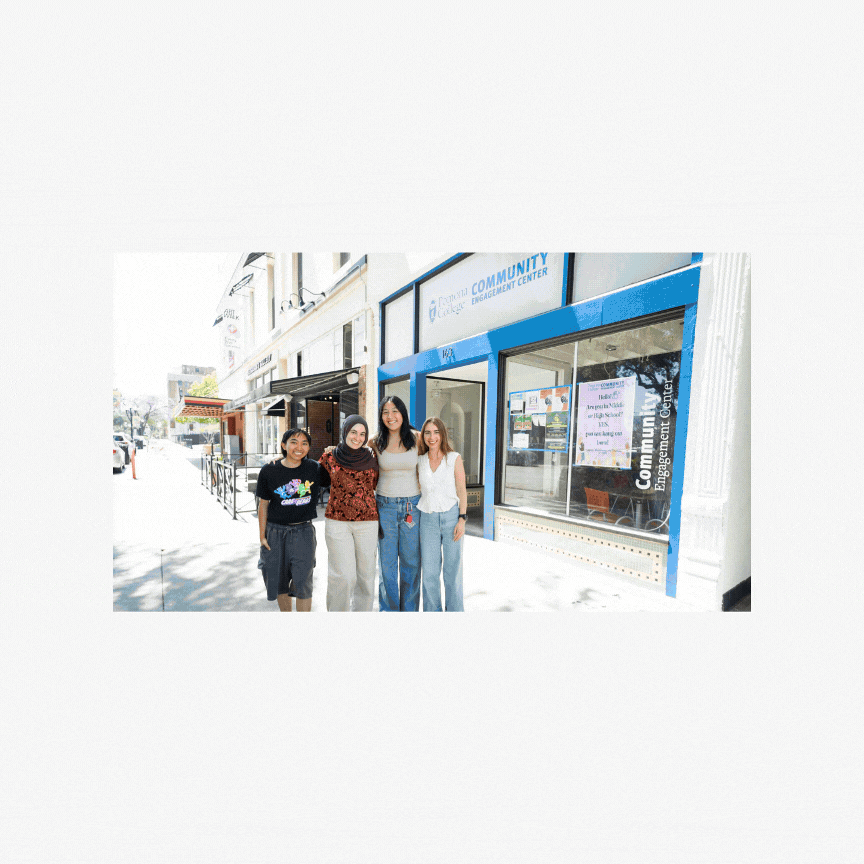Hive-Draper Fellowship
Redesigning Pomona's Community Center

Role
Human - Centered Designer
Timeline
May - July 2024
Tools
Figma, Figjam, Adobe Illustrator, SketchUp
Skills
Prototyping, qualitative research, user interviewing, visual design, facilitation, systems thinking
Project Article
Project Overview
As a Draper Center/Hive Fellow, I used human-centered design and community research to help shape the new vision for Pomona College’s Community Engagement Center. Through stakeholder interviews, design probes, and collaborative workshops, our team gathered insights from students, faculty, and community partners to understand their needs and aspirations for the space. We synthesized our findings into key themes and recommendations, which informed the early-stage planning and development of the center. This work laid the foundation for a community-driven, inclusive, and impactful hub for engagement.
Key Achievements
-
Research: Conducted interviews and synthesized findings into a comprehensive report, shaping the future design of a community center.
-
Stakeholder Engagement: Actively involved students and community members in co-creating solutions, fostering a sense of ownership and agency, and long-lasting relationships.
-
Empowered Students: Introduced underserved youth to HCD, equipping them with valuable critical thinking and problem-solving skills.
-
Actionable Insights: Delivered recommendations that directly shaped the center’s design, programming, and outreach strategies.
Our human-centered, community-informed solutions:
Physical Space Design
We found that when it comes to the physical space design, a few key elements are essential:
-
Functional and flexible: As a community center, the space is used by many different groups—adult civic classes, community meetings, after-school programs, and kids and families stopping in—so it needs to adapt to a variety of uses.
-
A known safe and welcoming space: While outreach will play a major role in this, the physical environment also matters. At a minimum, clear signage, good lighting, and intuitive wayfinding are needed to help the community feel comfortable entering and navigating the space.
-
Responsive to both needs and wants of kids: The space must address basic needs—such as access to food, especially given the food scarcity in the area—while also offering activities (like video games and sports) that make it a place kids genuinely want to spend time in and return to.
Programing
We learned that programming can include both unique, one-time offerings and ongoing, regularly scheduled activities. Because this is an area that can be co-created with the community, we interviewed parents, students, and other community members about what they feel is needed. Below is one idea that bridges parents’ desire to share their expertise with the community’s need for more career and college support:
Career Technical Education Workshops
-
Skill-share sessions led by parents, students, and 5C students (e.g., coding, video games, photography, music, etc.)
-
An entrepreneurial focus, since many community members are looking for ways to generate income
-
PCCEC can create opportunities for students to sell their work or table during Second Saturday events
Outreach Strategy
The basic simple outreach strategy: staff members will develop working relationships with a few key people at other organizations who have large audience bases (e.g., someone who works at PEOC has a way to “text the whole district”).
An “ambassador program” is a more creative and complicated outreach strategies with other benefits. The Community Ambassador Program identifies successful students who care about branching out beyond academic success and bringing resources to their communities.
The Process
Empathy & Ecosystem Mapping
-
Conducted 20+ in depth stakeholder interviews with students, parents, and educators to understand their perspectives on programs and resources.
-
Administered surveys at local art fairs and events to study middle and high school students’ afterschool behavior patterns and interests.
-
Mapped the ecosystem of resources and services in Pomona and nearby cities to identify socio-political and economic influences.
-
Investigated analogous spaces for inspiration and best practices.
-
Synthesized research findings into personas representing 3 students and 3 parents, capturing their unique needs and goals.




More synthesis, finding patterns among mental health providers versus perspectives.








